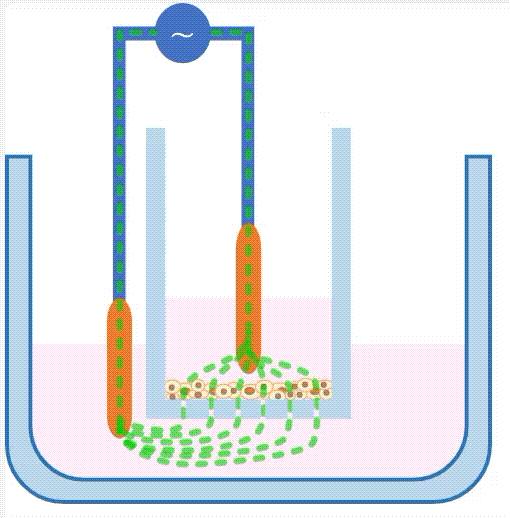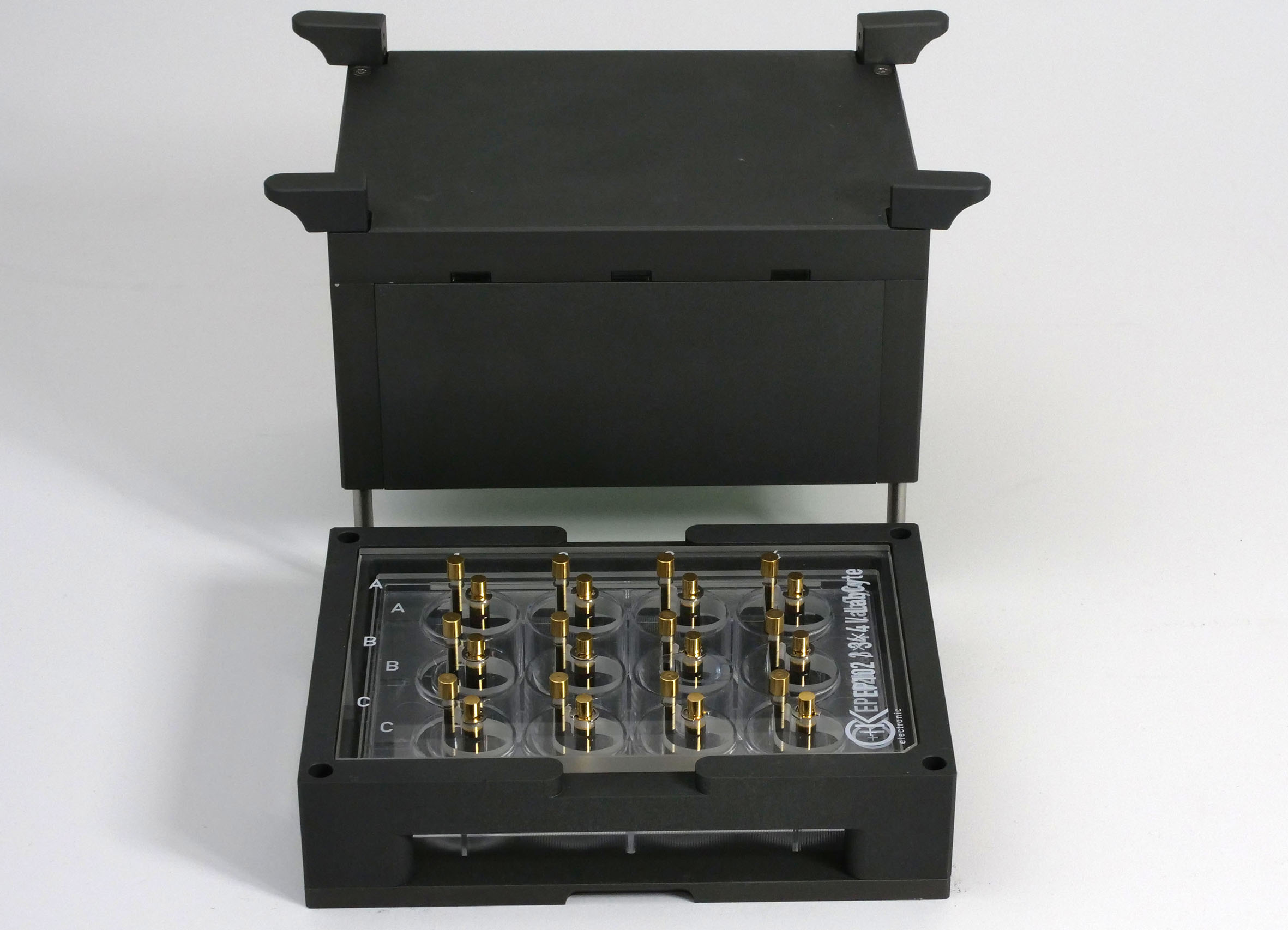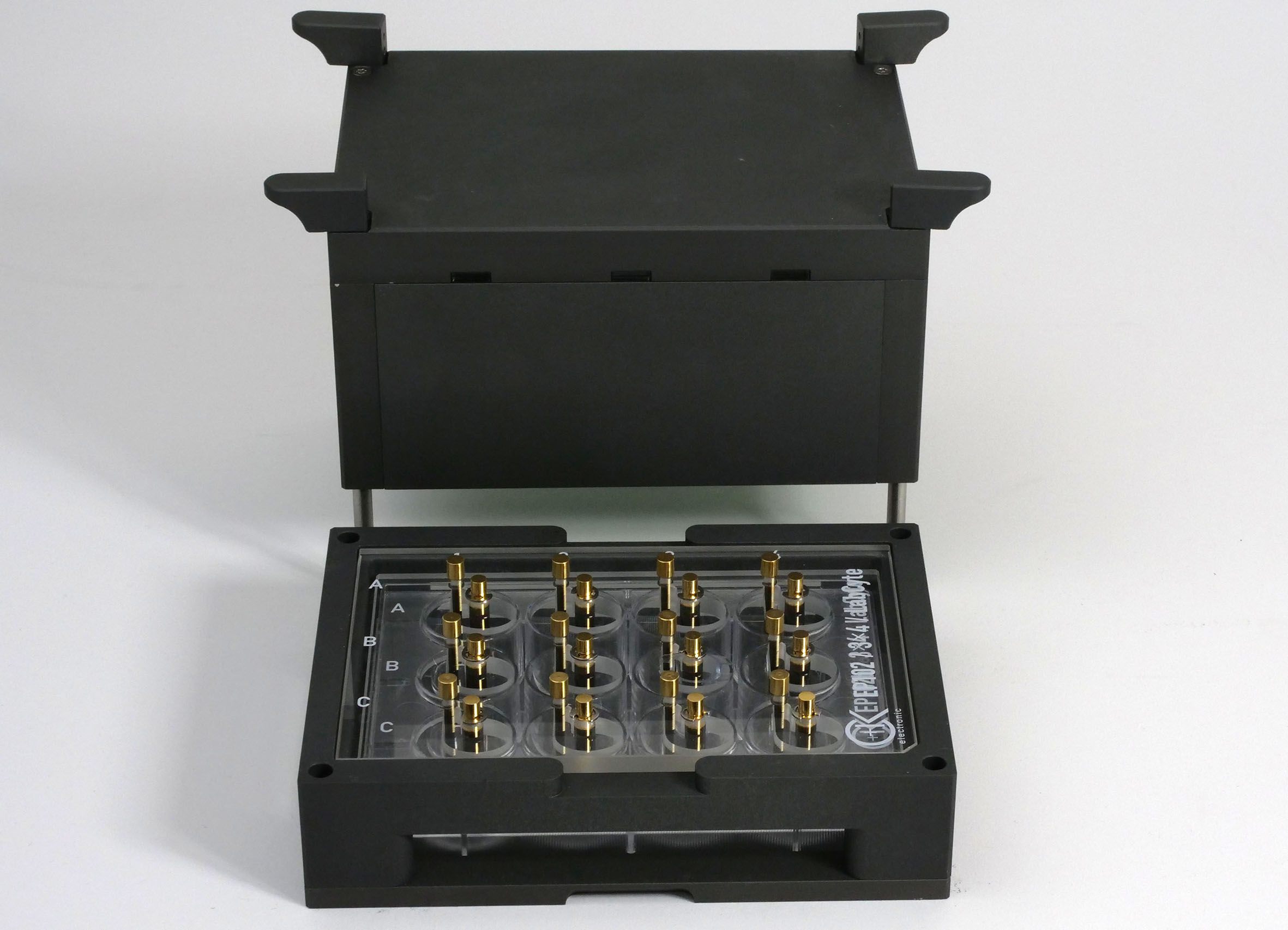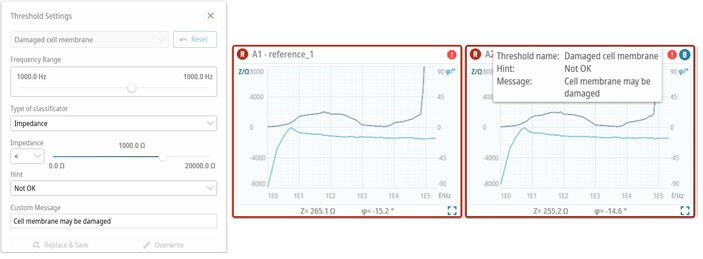CellSpectrometer CSM 2100
Impedance Spectrometry and TEER - Evaluating integrity, permeability, and barrier quality of cell culture tissue
With the CellSpectrometer CSM 2100, you have a compact and powerful impedance spectrometer with 12 or 24 measurement channels at your disposal, allowing you to evaluate tissue barriers of a corresponding number of cell cultures simultaneously with exceptional ease and speed for many different application fields. Analyze the full impedance spectrum from 1 Hz to 200 kHz in just 100 seconds or the TEER as fast as in only 15 seconds.
What are Impedance Spectrometry and TEER?
Tissue barriers are essential for the proper functioning of an organism. They perform vital roles such as protection, filtration, secretion, absorption, and excretion. Found throughout the body, thesebarriers consist of epithelial and endothelial layers. The epithelial layer covers organs and cavities, separating them from their surroundings. The endothelial layer lines the inside of blood vessels, acting as a barrier between the blood and surrounding tissues. Both layers feature tight and adherent junctions that maintain barrier integrity. These tissues are crucial for not only the body functions but also play a key role in safety testing of pharmaceuticals, cosmetics, and other chemical substances that interact with the body. The CellSpectrometer CSM 2100 measures the resistance of a cell tissue layer to an alternating current over a range of frequencies. There is a direct correlation between a cell layer's permeability and its impedance spectrum. By determining how much electrical signal is blocked by the cellular layer, the measurement effectively assesses barrier integrity.
Transepithelial/transendothelial Electrical Resistance (TEER) measurement, based on impedance spectrometry, is a vital and well-established method for in vitro investigation of cell cultures. TEER measures the resistance of a cell layer to an alternating current at two distinct frequencies (12.5 and 1000 Hz). There is a direct correlation between a cell layer's permeability and its TEER value:
- High TEER value: Indicates tight cell layers with low permeability and high electrical resistance.
- Low TEER value: Indicates cell layers with higher permeability and lower electrical resistance.
Typically, an impedance/TEER measurement setup involves a well plate with multiple inserts containing cultured tissue, wetted on both sides with an electrolyte medium. These inserts isolate the electrolyte medium surrounding the cell culture from the outer electrolyte medium, connecting the two only through the cell layer (see drawing). During measurement, an alternating current passes through two electrodes placed inside and outside the inserts. Real-time measurements of voltage, current, and phase shift (φ) are used to calculate the electrical resistance (in Ohms, Ω).
Advantages of the CellSpectrometer CSM 2100
The CellSpectrometer CSM 2100, a development together with the renowned German Fraunhofer Institute and funded by the German Federal Ministry of Education and Research (BMBF), is a compact and powerful impedance spectrometer with 12 or 24 measurement channels, allowing you to evaluate a corresponding number of cell cultures simultaneously with exceptional ease and speed.
- Full spectrum: measurements with 48 discrete frequencies (logarithmically distributed across the entire spectrum from 1 Hz to 200 KHz and an additional measurement point at 12.5 Hz) for all cell cultures in just 100 seconds.
- TEER measurements at 12.5 Hz and 1000 Hz available in only 15 seconds.
- Unique patented TiN coated electrodes (Titanium Nitride): These offer a significant improvement in signal quality compared to conventional stainless steel or gold-coated electrodes (enhancing the signal-to-noise ratio from 1:10 to 10:1). Up to 50 x less resistance & phase shift caused by the instrument itself.
-
Compatibility with standard well plates: The device and electrode plates are designed to fit commercial well plates with 12 (4 × 3 layout) or 24 (6 × 4 layout) wells, accommodating both hanging and standing inserts (e.g. TPP plates with Brand inserts). This eliminates the need to transfer cell cultures to other containers, streamlining your workflow.
Examples of suitable cell cultures include:
- Epithelial cells
- Endothelial cells
- Reconstructed Human Cornea-like Epithelium (RhCE)
- Skin models
- Other tissue-specific cells
 Self-contained system: The CellSpectrometer CSM 2100 operates independently without the need for a specialized environment, making it convenient for use in various laboratory settings.
Self-contained system: The CellSpectrometer CSM 2100 operates independently without the need for a specialized environment, making it convenient for use in various laboratory settings.- Easy maintenance: All components are easy to clean and can be sterilized, ensuring high hygiene standards and reducing the risk of cross-contamination between samples.
- Intuitive check calibration of the system possible at any time.
- Time and cost efficient: By simultaneously analysing all cell cultures under the same conditions, the device significantly speeds up the testing process compared to single-channel TEER measurement devices.
- Ethical: The device reduces volunteer testing and eliminates the need for animal experiments.
Sophisticated, user-friendly software with:
- Graphical display: Visual representation of impedance spectra, phase angles, and TEER values for all 12 or 24 wells, simplifying data interpretation.

- Relative change determination: Allows you to rapidly determine relative changes over time, facilitating comparative studies of effects. Specific result values due to sophisticated modelling in the software.
- Data correction and baseline relation: Assists in capturing the necessary data to subtract blank values (baselines), enabling more accurate measurements and to identify experimental stress.
- Threshold settings: Enables you to set flexibly multiple threshold signals to evaluate all wells at a glance and quickly by identifying significant changes.
- Comprehensive database: All measurement data are saved in the database, allowing easy export to dynamic Excel® sheets for further analysis and reporting. Statistical evaluation has never been so easy.
Fields of Application for Tissue Barrier Quality Measurements
Impedance measurements with the CellSpectrometer CSM 2100 offer significant benefits in various fields of cosmetic, pharmaceutical and medical research. Here are some key application fields:
Cosmetic & Drug Research and Development
- Permeability studies of drugs/cosmetics across epithelial or endothelial barriers (e.g. dermal penetration and absorption and many more). Ideal for studying the integrity of tissue barriers before
 and after treatments with cosmetics (skin) or drugs (various tissue types). Even minor gaps in the cell culture structure result in a significant drop in impedance.
and after treatments with cosmetics (skin) or drugs (various tissue types). Even minor gaps in the cell culture structure result in a significant drop in impedance. - Drug delivery: Tissue barriers often pose an obstacle to certain medical treatments, especially in the targeted administration of drugs. For a drug to reach its intended site of action, it must overcome these tissue barriers. Impedance measurement aids in developing effective strategies for drug delivery. Ideal technique to investigate active and passive transport mechanisms.
- Toxicology screening: Due to the high sensitivity of impedance spectrometry to micro-damages in cell layers, toxic effects of substances can be detected at an early stage. TEER is used as an ethically acceptable and reliable standard for classifying potentially dangerous or toxic chemical substances: In accordance with guidelines like REACH (Registration, Evaluation, Authorization and Restriction of Chemicals) or the OECD Guidelines for the Testing of Chemicals, TEER measurement replaces animal tests such as the notorious Draize eye test performed on rabbits.
- Non-invasive, continuous monitoring of cell membrane reactions: Enables the observation of cellular responses to external stimuli or treatments without disrupting the cells.
- Assessment of cell culture maturation completion: Helps determine when a cell culture is fully matured and ready for further experiments or applications.
Biomedical Research & Dermatology
- Disease modelling: Studying barrier dysfunction in diseases such as various skin diseases, wound healing inflammatory bowel disease (IBD), diabetes, or neurodegenerative disorders, and many more.
- Infection studies: Examining the effects of pathogens (e.g., bacteria, viruses) and immune responses on epithelial or endothelial barrier integrity.
- Cytokine research: Studying inflammatory cytokine effects on epithelial or endothelial layers.
- Cancer research: Understanding how cancer cells invade through barriers in metastasis.
- Developing artificial tissues designed to mimic natural barriers.
Environmental and Food Safety
- Toxin screening: Testing environmental toxins or food additives for their effects on epithelial barriers.
- Assessing the impact of nanoparticles on cellular barriers.
Through these diverse applications, the CellSpectrometer CSM 2100 significantly contributes to advancing research and development by providing a precise, efficient, and ethically responsible measurement method.
Technical Data
Device, outer dimensions: 15 (L) x 11 (W) x 11 (H) cm, Weight: 2.23 kg (without electrode plate), Material: anodized aluminum, Power supply: via USB 2.0, type C (computer), 3 W
Electrode plate: dimensions: 134 (L) × 91 (W) × 33 (H including electrodes height) mm³, equipped with 12 electrode pairs for hanging or standing inserts, or with 24 electrode pairs for hanging inserts, weight: approx. 260 g, material: glass plate plus stainless steel, gold-plated, electrodes with patented, nanostructured titanium nitride (TiN) coating
Measurement range:
Frequencies: from 1 Hz to 200 kHz, 48 discrete frequencies (logarithmically distributed across the entire spectrum and an additional measurement point at 12.5 Hz)
Signal amplitude: 120 mV
Impedance: 0 to 20 kΩ
Phase: -90° to 0°
Technical changes may be made without prior notice.








